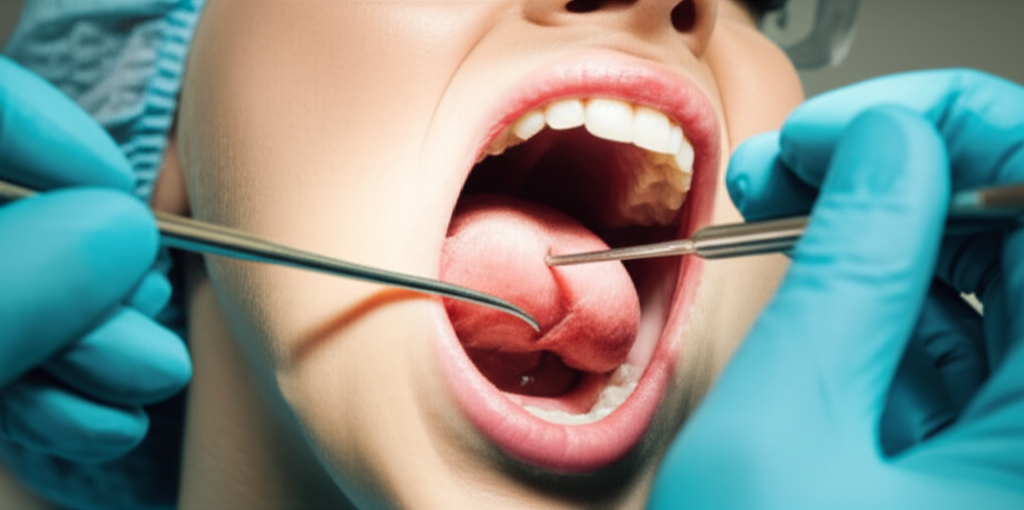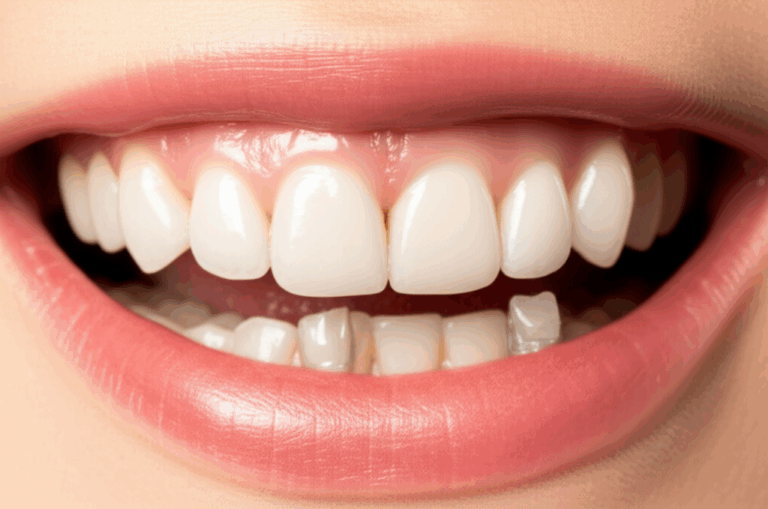
How Long Does a Dentist Take to Pull a Tooth? Factors, Timelines & What to Expect
Worried about getting a tooth pulled? Wondering how long you’ll be in the dental chair? In this clear, simple article, I’ll walk you through what to expect during a tooth extraction. We’ll look at average timelines, what makes some extractions longer or shorter, and how you can plan for a stress-free recovery. If you want real answers and clear advice—read on!
Table of Contents
Introduction: Why Timing Matters
Have you ever wondered, “How long does a dentist take to pull a tooth?” If so—you’re not alone! Lots of people feel nervous about tooth extractions. They want to know how long they’ll be in the dental chair, what’s going to happen, and when they can get back to normal life. Knowing about the whole process can make things a lot less scary. I’ve helped many patients through extractions, and trust me: knowing what’s coming helps a lot.
What Is a Tooth Extraction?
A tooth extraction means taking a tooth out from where it sits in your mouth. Dentists do this for many reasons. Sometimes a tooth is too rotten, has gum problems, or is broken and can’t be fixed. Other times, teeth like wisdom teeth get stuck and need surgery to come out. Whether you’re getting your first baby tooth pulled, or having a gold crown removed from a permanent molar, the steps are kind of the same—but the time can change.
Common Reasons for Tooth Extraction:
- Tooth decay that can’t be fixed by a filling or cap
- Gum disease making the tooth loose
- Stuck wisdom tooth that causes pain or swelling
- Broken tooth below the gum
- Making space for braces
- Accident or injury
Dentists and oral surgeons work together to make the process quick and as comfortable as they can.
How Long Does a Typical Tooth Extraction Take?
Let’s get to the big question: How long does it take to pull a tooth? The answer depends on a few things—but here are the averages so you can plan.
| Extraction Type | Actual Time Pulling Tooth | Whole Appointment Time |
|---|---|---|
| Simple Extraction | 5–30 minutes | 45–90 minutes |
| Surgical Extraction | 20–60+ minutes (per tooth) | 60–120+ minutes |
| Multiple Extractions | 20–120+ minutes | 90–180+ minutes |
A simple extraction is when the tooth sticks up above the gum, and the dentist uses special tools to wiggle and remove it. This is usually quick—around 5 to 30 minutes.
A surgical extraction is trickier. The tooth may be broken, or stuck under the gum. The dentist might need to cut the gum, take away some bone, or split the tooth. This can take 20 to 60 minutes or more for each tooth.
Remember, the full appointment also includes coming in, X-rays, getting numb from shots, and waiting for the medicine to work.
Just so you know: Everyone’s mouth is different, so times can change depending on you.
What Factors Can Change Extraction Time?
You might ask: “Why do some teeth come out super fast and others take forever?” Below are the main reasons pulling a tooth can take longer or go faster:
1. Which Tooth Needs to Come Out
- Front teeth (incisors and canines) often have one simple root and are quicker to pull.
- Back teeth (molars) have more roots and sit deeper in thicker bone, so pulling a molar—especially a wisdom tooth—can take more time.
- Stuck teeth (teeth that didn’t pop out all the way) are usually slower since the dentist might need to cut gum or bone.
2. What Shape the Tooth Is In
If the tooth is healthy but just needs out (for braces or space), it usually comes out faster. If it’s broken, decayed, infected, or has twisty roots, things get harder. Sometimes, the tooth breaks during pulling and must be taken out in bits.
3. Age & Health of Patient
Children’s and teenagers’ teeth come out quicker because their roots are smaller, and their bones are softer. Adults and older folks often have tougher bone or tricky roots, making things a bit slower.
4. Type of Numbing or Sedation
It takes a bit for numb medicine—like local shots or IV sedation—to start. Usually, local shots take 5 to 15 minutes. IV sedation or general sleep medicine—which puts you to sleep—takes more time to set up and for you to wake up.
5. Dentist’s Experience Level
A skilled, experienced dentist or oral surgeon will usually finish a simple extraction in less time because they’ve seen it all and know tricks to make it easier.
6. Your Own Mouth
Everyone’s mouth is a little different. Thick bone, weird-shaped roots, or teeth close to nerves and sinuses can turn a quick extraction into a long one.
7. Complications
Stuff like heavy bleeding, root breaks, or unexpected germs can make the process slower.
Example: One time I pulled an abscessed molar for a patient. The infection made the bone softer, so the tooth came out quickly—but we spent more time getting things set up and making sure the healing went right.
What Happens During the Appointment?
If you’ve never had a tooth pulled, you might imagine something wild—a dentist yanking and the patient yelling. The real thing is much easier!
Here’s what usually happens step by step:
1. Check-In & Medical Stuff (5–10 minutes)
- Fill out forms, talk about your meds or allergies, and the dentist asks about your health.
2. X-rays and Look Over (5–15 minutes)
- Dentist takes an X-ray to see the tooth roots, bone, and nerves.
- The plan for numbing and pulling is discussed.
- This is a good time to ask questions.
3. Getting Numb (5–20 minutes)
- Local anesthesia is given as a shot near the tooth. You’ll feel a quick poke, then tingling and numbness.
- If you get laughing gas or the sleepy drugs, add a few more minutes to get comfy.
4. Pulling the Tooth (5–60+ minutes)
- The dentist uses tools—elevators to loosen the tooth and forceps to take it out. You’ll feel some push and pull, but it shouldn’t hurt. If it does, let your dentist know right away.
5. Bleeding Stop & Closing Up (5–15 minutes)
- Gauze goes on the hole.
- If you need stitches, these are put in and take a few more minutes.
6. Recovery & Go-Home Tips (5–20 minutes)
- Someone on the team goes over how to take care of your mouth at home, what to expect, and what you can eat.
- Sometimes you wait a few minutes to make sure the bleeding’s okay.
Total visit: usually, about 45 to 120 minutes, depending on the case.
What Does It Feel Like to Get a Tooth Pulled?
Most people worry, “Is getting a tooth pulled going to hurt?” Here’s what most folks feel:
- Numbness: The area around your tooth will feel big and tingly.
- Pressure: You’ll notice pushing and wiggling, but not pain. If you feel sharp pain, speak up so your dentist can give more numbing.
- Sounds: You might hear some popping or crunching—that’s normal, and nothing to worry about.
- Seeing: You’ll probably see or feel a little blood. This is to be expected.
Afterwards, as the numbness fades, your jaw might hurt a little for a few days. Usually, some Tylenol or ibuprofen is all you need.
How Long Does Numbness Last After Tooth Removal?
One thing people often ask is, “How long does the numb feeling last after an extraction?” Here’s your answer:
- Local shots (the usual kind) keep you numb for 2 to 4 hours after you get them.
- For bottom teeth (lower jaw) extractions, the numbness can last a bit longer than on the top.
- If you got IV drugs or were put to sleep, you might feel out of it or numb most of the day.
Tips:
- Don’t eat or drink hot stuff until you can feel your mouth again. You don’t want to burn your tongue!
- It’s normal to drool or sound funny until your lips and tongue feel normal again.
What Happens After the Extraction?
Once your tooth’s out, your mouth starts to heal.
First 24–48 hours
- A blood clot forms where the tooth was. Don’t bother it! This is step one for healing.
- You might see a little bleeding for a few hours and some swelling the next day.
The First Week
- Gum starts to heal—it’ll look pink instead of red after a few days.
- Don’t use straws, spit hard, or brush rough over the hole.
Weeks to Months
- The hole closes up.
- New bone starts to fill in over a few months. You might feel a dip or “hole” for a while but it’ll fill in.
Things To Look Out For
- Bad breath, bad pain a few days later, or a weird taste could mean dry socket—a common problem if the blood clot falls out.
- Keep your follow-up appointment and call if you have fever, really heavy bleeding, or swelling that doesn’t stop.
If you’re getting new teeth—like a denture, crown, or implant—a dental lab can help your dentist get your smile back.
How Can I Shorten My Tooth Extraction Recovery?
You’ll heal faster if you do what your dentist tells you. Here’s what I usually tell patients:
- Rest: Take it easy the first 24–48 hours.
- Ice packs: Put them on your cheek for 20 minutes at a time to help with swelling.
- Soft foods: Eat mashed potatoes, yogurt, or smoothies for a day or two.
- Don’t use straws: Sucking can pull out your blood clot and lead to dry socket.
- Don’t smoke or vape: These make healing slower.
- Keep your mouth clean: Gently rinse with salt water after the first day, but no hard spit.
- Take meds the right way: Pain is usually mild—store-bought medicine is enough for most.
If you’re getting a denture or new tooth, a removable denture lab can help your dentist make it quicker.
How Do Labs Help Dentists With Extractions?
Dental labs work behind the scenes, but they’re really important if you need something to fill the space left behind.
- Immediate dentures or partials are made by a china dental lab, so you don’t have to go around with a missing tooth for long.
- Crowns and bridges might be needed if a nearby tooth needs help. These are made by lab workers and fitted by your dentist.
- Sometimes, extractions set you up for dental implants. After things heal, your dentist teams up with a lab for your new tooth.
This teamwork between your dentist and lab workers means you’ll get the best for your health and your smile.
Frequently Asked Questions (FAQ)
Is getting a tooth pulled painful?
No! With today’s numbing, you shouldn’t feel pain when the tooth comes out. You might feel pressure. If you feel pain, tell your dentist right away so you can get more numb.
How long does the numb feeling last?
Usually 2–4 hours. Don’t eat or drink hot or spicy things till you feel normal.
When can I eat after extraction?
Wait until you’re not numb anymore. Start with soft foods for the first day or two.
What are the signs of dry socket?
Bad pain 2–5 days after, weird taste, or smelly mouth.
How long should I rest after an extraction?
Rest for 1 to 2 days. Most folks can go back to light things the next day.
Can I go to school or work the same day?
Not a good idea. Give yourself some break time, especially if you got sleepy medicine or had more than one tooth pulled.
Advice checked by Dr. Joe Dental, DDS, Oral Surgery Specialist
Key Takeaways
- Most tooth pulls are quick and almost pain-free because of good numbing.
- Simple pulls usually take 5–30 minutes to get the tooth out; the whole visit is about 45–90 minutes.
- Harder pulls or stuck teeth take longer—plan for 60–120+ minutes.
- Front teeth come out quicker; molars and wisdom teeth can take more time.
- Talking with your dentist, following care tips, and good teamwork with labs mean a healthy mouth after an extraction.
- Watch for dry socket and call if you see bad pain, too much bleeding, or swelling.
- Always ask questions—knowing what’s going on helps a lot!
Ready for your extraction? With today’s dentists and caring helpers, getting a tooth pulled isn’t scary. It’s the first step for a healthier, happier smile.








